Rare Visitors in Kashmir
First published on
April 23, 2024
By Parvaiz Yousuf
Their slim, colourful bodies and long tails immediately attracted birders’ attention. The extra plumage, three instead of the standard two for ducks, piqued widespread interest and experts quickly identified the visitors. The five female Long-tailed Ducks Clangula hyemalis in Wular lake in Kashmir on the winter day of January 22, 2023, became the source of much excitement. And rightfully so, as the species was recorded here after more than eight decades.
The species was last seen in 1939 by naturalist and retired English officer F. Ludlow in Hokersar, near Srinagar. Wular Conservation and Management Authority (WUCMA) employee Showkat Ahmad first reported and captured the ducks on camera, and the news then spread like wildfire among local birders and ornithologists.
We can't be sure that these ducks haven't been visiting our wetlands in the past, and it could be that they were not recorded. In 2020, the COVID19 pandemic and subsequent lockdowns forced birders to stay within their own communities, and many took up the hobby of birding in their own backyards. Following this ‘balcony birding’, more birdwatchers are paying attention to these birds than ever before. As a result, more bird species are being spotted.
WUCMA's efforts, including the first-ever water bird census of Wular Lake carried out in 2022 (which this author was also a part of), raised awareness, and encouraged the participation of locals in conservation initiatives, and the invitation to birders from all over the Valley on expeditions, have undoubtedly yielded positive outcome.
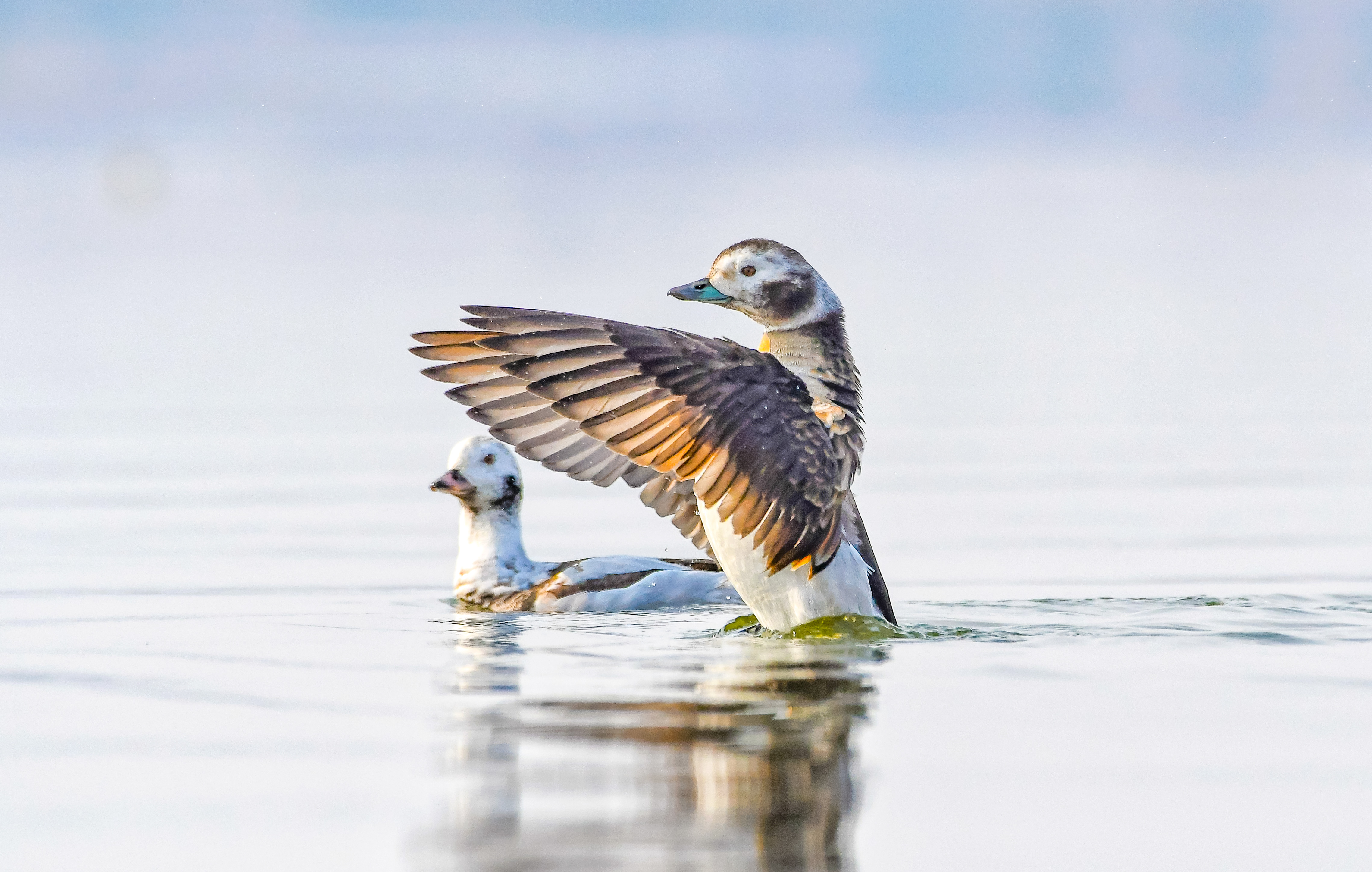
The Long-tailed Duck was last seen in 1939 by naturalist and retired English officer F. Ludlow in Hokersar, near Srinagar. Photo: Rouf Rather
Birders’ Paradise
As birders, we are often surprised by a new or unexpected species every time we venture into Kashmir’s green vales, and the tradition held strong early in 2023. Wular Lake, a Ramsar site and one of the largest freshwater lakes in Asia, is situated at the foot of Haramuk Mountain in Bandipora district; it is a well-known and attractive tourist destination. The lake is home to varied wildlife, including hundreds of migrating bird species from countries as far-flung as China and Russia, compelling birders like us to visit regularly. Every year we observe hundreds of migratory bird species in and around Wular, such as the Common Pochard, Red-crested Pochard, Common Shelduck, Ruddy Shelduck, Northern Pintail, Northern Shoveler, Greylag Goose, and Great Crested Grebe. Among birds of prey, the White-tailed Eagle and Imperial Eagle attract a lot of birders from different parts of the valley.
The lake spans over 200 sq. km. and gets the majority of its water from the Jhelum river. It lies in close proximity to Baramula Road, between Sopur and Bandipora towns. Nestled in the midst of this lake is a small man-made island called the ‘Zaina Lank’, constructed during the reign of King Zainul-Abi-Din in the 15th Century. Modern-day Wular Lake is thought to be the remnant of the much bigger, ancient Satisar Lake. This lake and its surroundings are also frequented by visitors from all over the world.
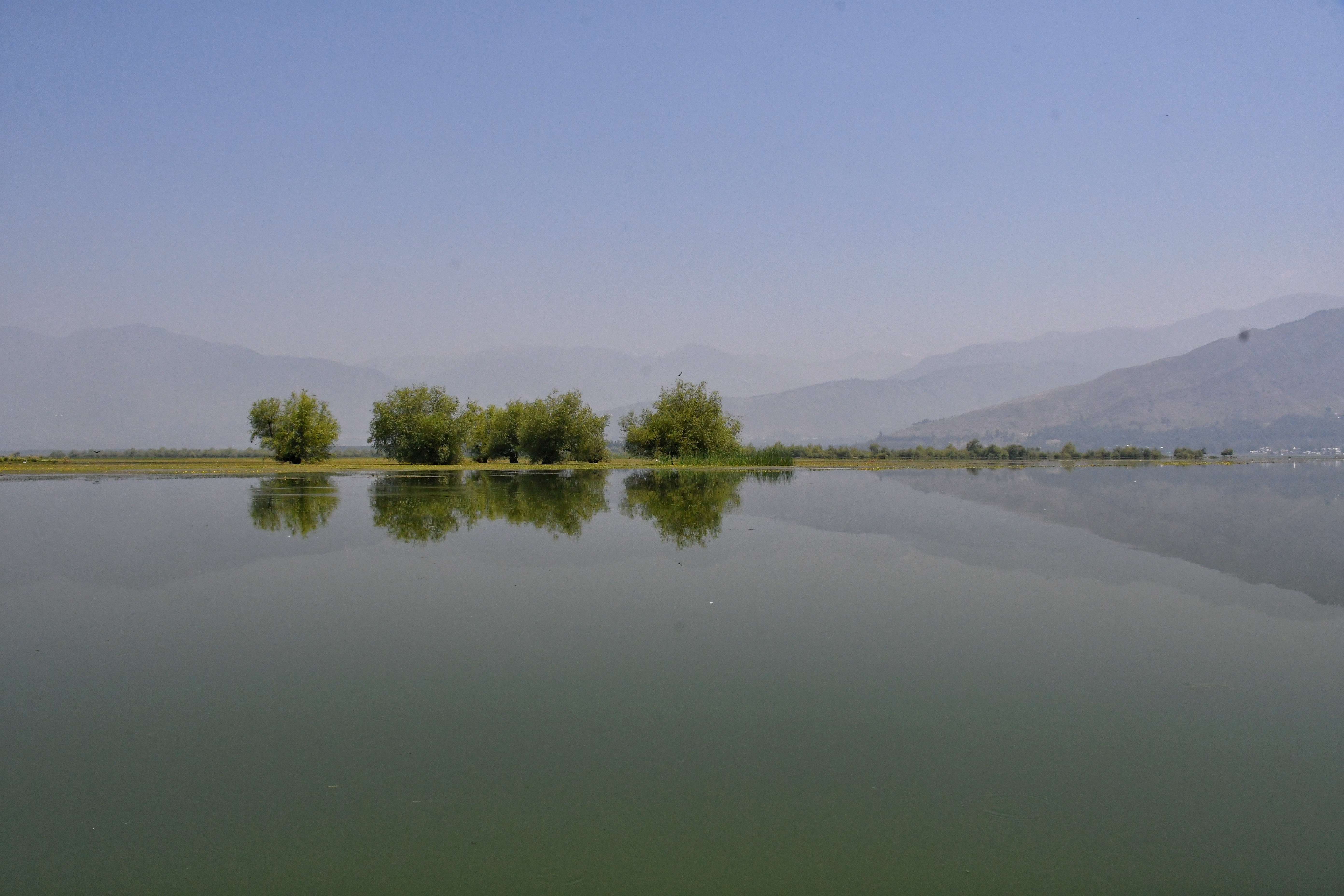
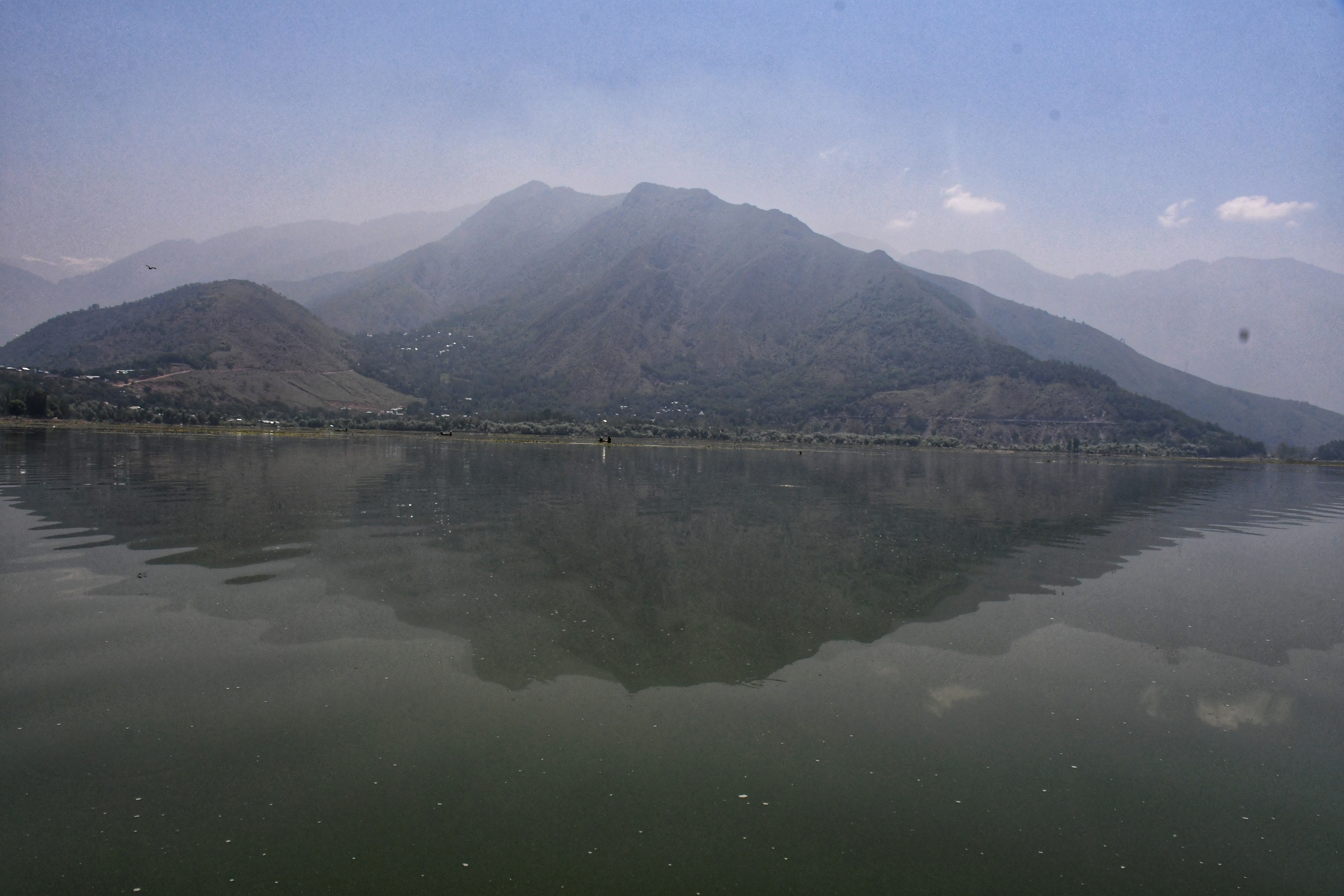
The Wular lake is home to varied wildlife, including hundreds of migrating bird species from countries as far-flung as China and Russia, compelling birders like us to visit regularly. Photo: Rouf Rather
The Long-tailed Duck
A sea duck and a true Arctic species, it reproduces in the Tundra and Taiga regions up to 80° north. Post breeding, it travels to the Great Lakes of North America, eastern Asia, western Greenland, and the coasts of North America, which host both cold and temperate water. The ducks have a varied diet, with an emphasis on food that is regionally available. Their preferred food consists of marine invertebrates such as crabs and molluscs. They are capable of diving to depths that no other sea duck can match (more than 60 m.). We saw the Long-Tailed Ducks frequently diving into the deep Wular Lake.
However, despite the species' widespread occurrence, there have been limited studies on it, including in Kashmir. In other parts of the world, such as in northern United States and southern Canada, hunting the species is common. Given that it often spends the winter in flocks of varying sizes, is widely spread, and can be found far offshore, it has been challenging to obtain population sizes and trend estimates for this species. Data from the western coast of North America indicate that this species is in serious decline. No downward tendencies can be seen in the data from the East Coast of North America, but accurate estimates have proven elusive.
Having said that, Long-tailed Ducks occur all the way around the Arctic and Antarctic. Its breeding grounds in North America span the Canadian tundra and the Arctic coastline from Alaska to Greenland. On surrounding offshore islands and coastal tundras, they frequently nest in large colonies. Females produce about seven eggs per clutch during the breeding season.
The males’ basic plumage is seen in the spring and worn during the breeding season, while the alternate plumage is only present during the winter. The male is easily identified by the two long, narrow tail feathers that stream behind the tail, hence the name Long-tailed Duck. White feathers on the male's head are replaced by black ones during the breeding season, and it displays a vivid pink band around its bill. Their flight pattern follows a quick and low trajectory, as they form and reform tight clusters.
All five birds that we observed were in their non-breeding plumage, as it was wintertime. The nasal quality of this bird's call allows it to be heard from great distances, both on the beaches, where it spends the winter, and on the tundra, where it breeds.
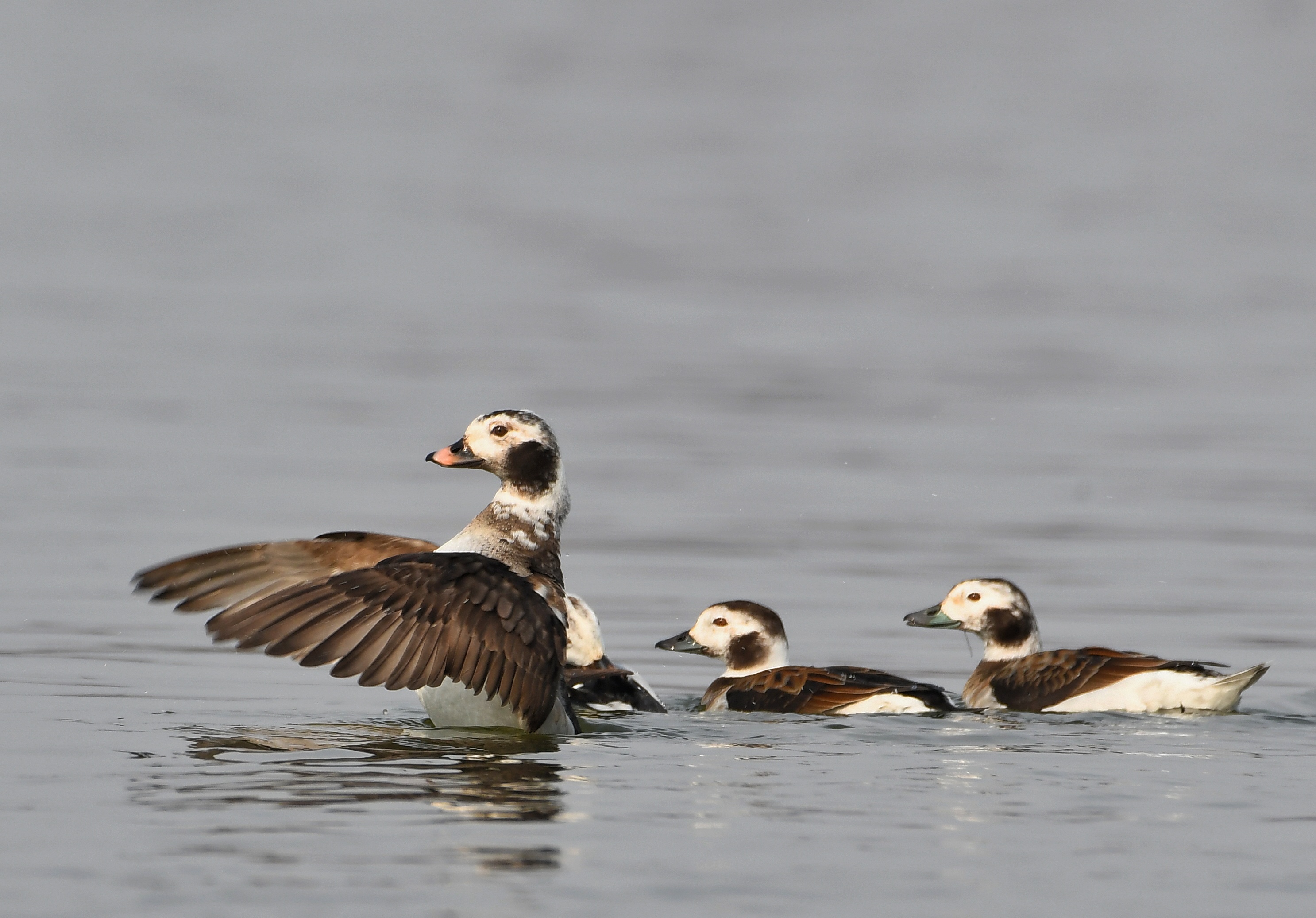
Long-tailed Ducks occur all the way around the Arctic and Antarctic. Its breeding grounds in North America span the Canadian tundra and the Arctic coastline from Alaska to Greenland. Photo: Rouf Rather
Wular Lake: The Ramsar site
For birders like us, Wular Lake is a go-to place as far as birdwatching is concerned. One of Asia's largest wetlands, it is located at an elevation of 1,580 m., between the coordinates 34°16′ to 34°20′ N and 74°33′ to 74°44′ E. Located around 35 km. northwest of Srinagar city, Wular Lake is an oxbow-type lake fed primarily by the Jhelum river and its tributaries. It acts as a vast catchment area for floodwaters, regulating flows that are vital for agriculture, hydropower generation, and even recreational activities such as rafting in the Kashmir valley. There are plenty of fish in the lake and the surrounding marshes, which provide 60 per cent of Jammu and Kashmir's yearly fish catch. The lake is deepest on the western shore, opposite the Baba Shakur Din hills, with a maximum depth of 5.8 m. The Jhelum, to the northeast, is the lake's only outlet. The sloping hills of the Zanskar range in the western Himalaya form the catchment of the lake, with the runoff draining through different nallahs, of which Erin and Madhumati are prominent. The low-lying portions of Sonawari are located on the eastern and southern sides of the river, and they were frequently inundated before the construction of numerous crisscrossing embankments along the Jhelum. Historically, farmers have used the reclaimed lake area to cultivate paddy and maintain willow, poplar, and fruit tree plantations. In the western lowlands, specifically in the Sopore-Watlab corridor, paddy fields have been developed. The Indian government designated it a Wetland of National Importance in 1986, and the Ramsar Convention designated it a Wetland of International Significance in 1990.
What Attracted the ducks to Wular in 2023?
Over time, the Wular Lake has seen a significant transformation. The lake’s water level saw a massive decline on account of ecological succession, siltation and willow tree infestation. To address this, silt is being dug out and willow trees are being cut. Around 4.5 sq. km. have been reclaimed out of a total of 27 sq. km. as of now.
We are seeing a great change in Wular Lake’s topography since the recent efforts. The lake's capacity has grown as a result of the tree-cutting and dredging. In addition, Anti-Poaching Units (APUs) have been maintained to prevent hunting and poaching. These APU squads occasionally seize large punt cannons and prevent migratory birds from being shot. Moreover, birders like us also keep a eye on poachers and inform the wildlife department of any untoward incidents. These factors may have played a crucial role in why this duck species returned to the lake after such a long absence.
The Ongoing Problem and the Solution
While WUCMA is continuing its efforts to protect the area and its wildlife, the lake's size makes it difficult even for a large team to oversee, and the economies of dozens of nearby villages depend on it for survival. The fisheries, sale of fodder, water chestnuts, and other commercially significant goods from the lake provide a good source of income for the UT and its people and any conservation plans must be cognizent of this. There is greater need to create awareness of the importance of environmental protection to mitigate the danger to migratory birds such as Long-tailed Ducks and Smew in Wular. The local community's help is crucial for the preservation of Wular Lake and its biodiversity. Various governmental departments should collaborate with local non-governmental organisations to ensure better cooperation. Together, we can and must make strong efforts to conserve and care for Wular Lake – as it cares for us.
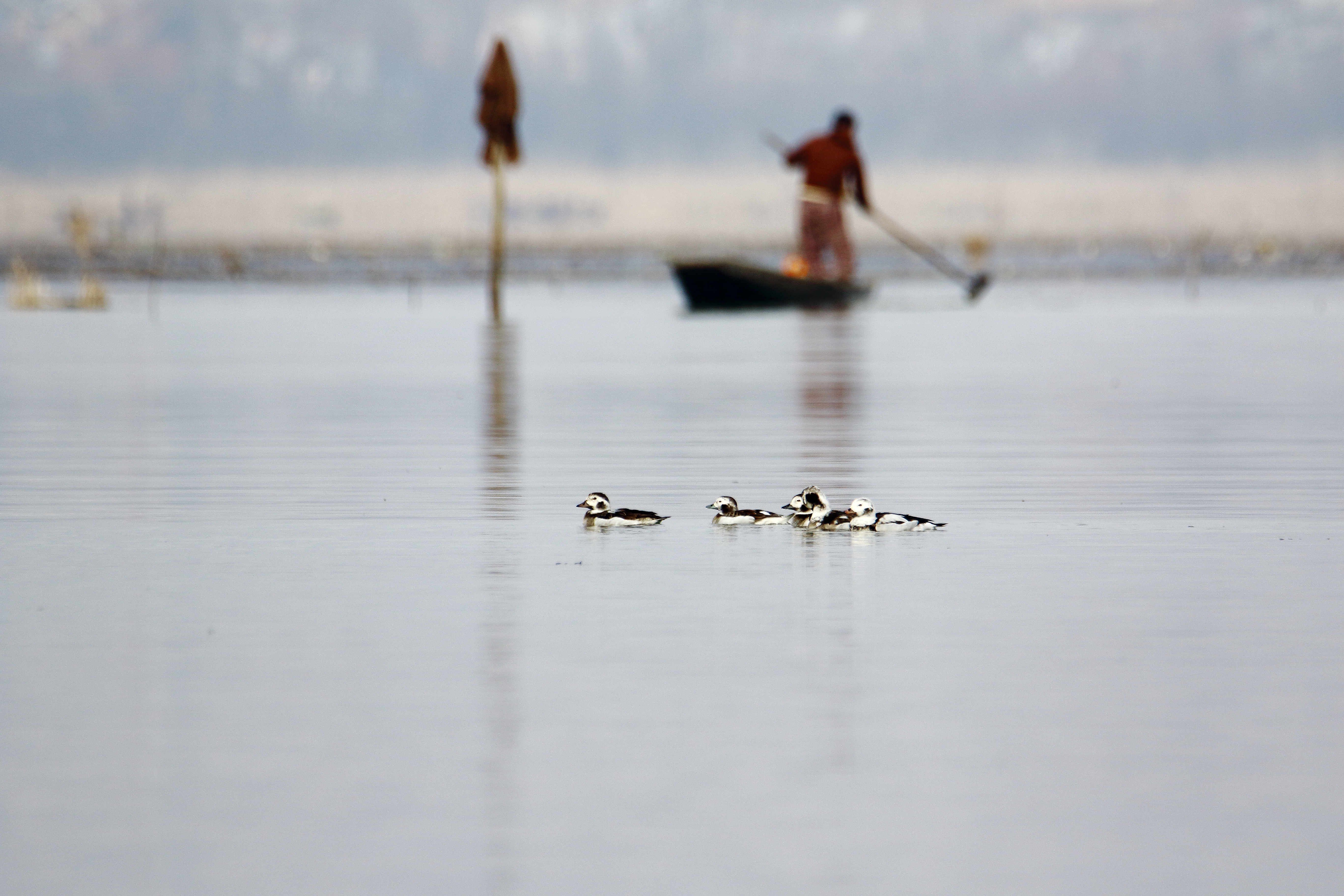
The fisheries, sale of fodder, water chestnuts, and other commercially significant goods from the Wular lake provide a good source of income for the UT and its people and any conservation plans must be cognizent of this. Photo: Sofi Qayoom
Parvaiz Yousuf works with the Wildlife Institute of India as a Project Associate-I, and the Wildlife Conservation Fund, YPJK. Rouf Rather is the CEO, JK Birdwatcher Club, and Director, Wildlife Conservation Fund, YPJK.






